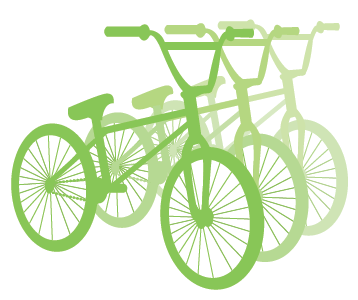By Katie Peige
If you’re looking for some green inspiration or want to get involved with some cool sustainability projects, the United States Green Building Council (USGBC) is the place for you. Arizona’s USGBC chapter hosts events throughout the year to fulfill their sustainable building education and advocacy mission. Last month, the Arizona chapter’s annual conference, dubbed “50 Shades of Green,” shed light on more than 50 statewide sustainability initiatives and offered a bright green vision of the future for our Arizona cities, schools, and communities.
The USGBC is dedicated to creating a sustainable and prosperous future through implementing environmental and energy-efficient designs into the construction of new buildings and renovations of older buildings. The USGBC’s main program, Leadership in Energy and Environmental Design or LEED, allows the organization to rank a building according to certain criteria. Only LEED accredited professionals can designate a project as LEED certified. The accreditation process for professionals involves taking sustainable-building classes, passing a test and working on a LEED project.
The Center For Green Schools
The conference opened on a national note by highlighting the initiatives of USGBC’s Center for Green Schools. In her keynote speech, Hannah Debelius, USGBC Students Manager for the Center for Green Schools, explained that the center’s task is to make every school a green school, a place that “creates a healthy environment that is conducive to learning.” The idea is to integrate the sustainability features of the building into the curriculum and lifestyle of the academic community, and to foster environmental stewardship among students. Debelius emphasized the power that schools have to create agents of change, considering that 25 percent of the U.S. population—whether as a student, teacher, or staff member—is in school and each of those people has the power to influence their friends and family.
Debelius spoke on the subject of LEED certification for schools, noting that most of the certifications awarded thus far have been for new construction. Renovation is on the rise, however, and considering it would take $22 billion to bring all of the schools in the U.S. up to code, there is ample opportunity for LEED retrofits. Debelius also shared success stories of Campus Conservation Nationals (where campuses compete against each other in a 21-day competition to reduce energy and water usage), and explained that many of these students, those involved with the center’s programs, go on to receive their LEED accreditation, making them more competitive in today’s job market.
Arizona’s Ultimate Green School
The conference also highlighted an ambitious green school initiative by Colonel Smith Middle School in southern Arizona. The school is making an effort to become a net-zero building, which means the energy produced on site is equal to the amount of energy the building needs to operate. Superintendent Ronda Frueaff and Richard Clutter of the EMC2 Group showcased many features of their school including water harvesting, wind turbines, and hot water solar tanks. They also spotlighted a multi-layered attempt to harvest natural light including huge windows, varying height windows, and skylights. Students have the opportunity to track the building’s energy use on iPads with a dashboard system that keeps real-time data on energy used and produced. Colonel Smith Middle School at Fort Huachuca educates 375 students and is striving to be Arizona’s first net-zero school and the 12th in the nation.
Jonce Walker, the sustainability manager for Maricopa County, spoke about the power that younger generations hold in pushing sustainability policy and programs. Walker focused on the millennial generation, those born between 1980 and 2000, and noted how the most diverse, philanthropic, connected, and tattooed generation in the United States is the driving force of an anti-car revolution. These anti-car enthusiasts have pushed the rise of more bike-friendly streets and accommodations, mass transit, and car and bike sharing options (coming soon to the greater Phoenix metropolitan area).
Walker noted that the Phoenix light rail system, the largest starter line in the United States, continuously surpasses the original projected numbers of ridership. Much of the light rail’s success can be attributed to students forgoing car ownership and hopping on the rail to get from Arizona State University’s main Tempe campus to the airport, and to the downtown campus. The other part of the light rail success story lies in the design of comfortable stations that include shade and local artwork to make for a more pleasant experience while awaiting the next train.
Students and bike enthusiasts are in for a treat later this year as a bike share program—a multi-city collaboration between Phoenix, Mesa, and Tempe—will offer a vast network of bike stations for bike pick-up and deposit. These stations can be easily moved, based on the popularity of the stations, to adjust for supply and demand.
A Bright Green Future
The conference continued with more speakers and workshops featuring topics such as green issue advocacy, ergonomics, multi-family housing, the future of Phoenix as a sustainable desert metropolis, and a trade show showcasing an array of vendors with their building green goods.
By the end of the day it was clear-—Arizona has an abundance of green initiatives, as the list that was keeping track of the green initiatives exceeded 50 unique projects (they stopped listing at 50 with more than 15 projects not included). Overall the conference was a showcase of 50 shades of hope, innovation, creativity, and revolution. If you are interested in any of these projects or in additional green building education, you can become a member of the Arizona Chapter of the USGBC and participate in their many educational and interactive events.
Illustrations by Arina Anoschenko









[…] See on greenlivingaz.com […]